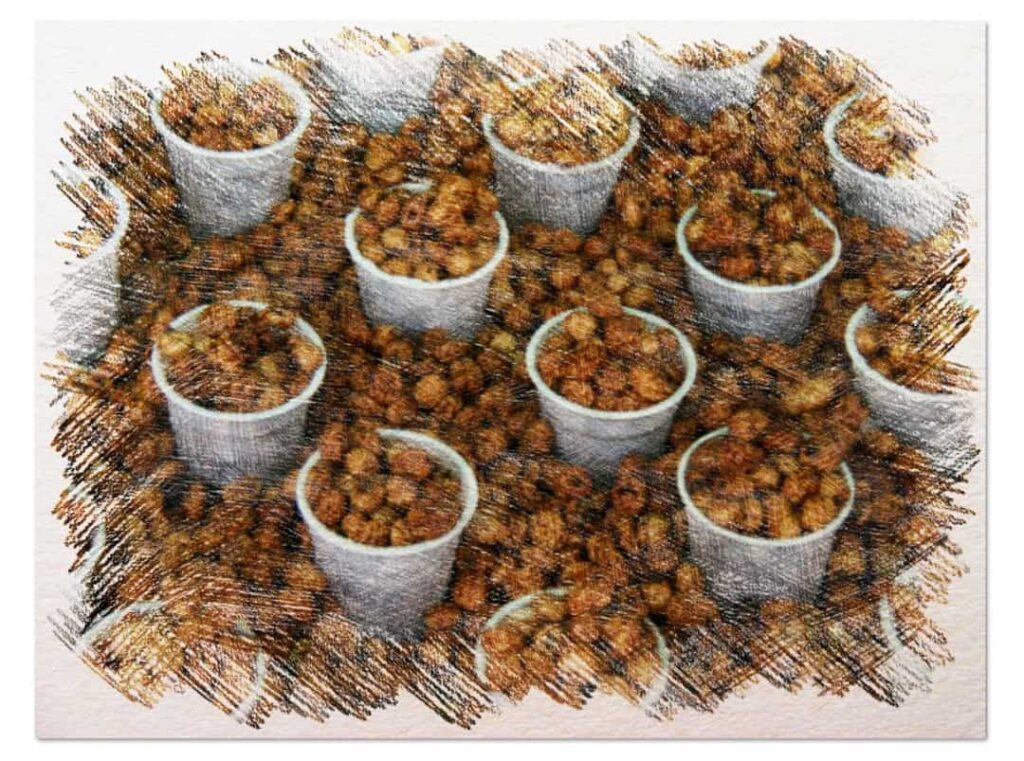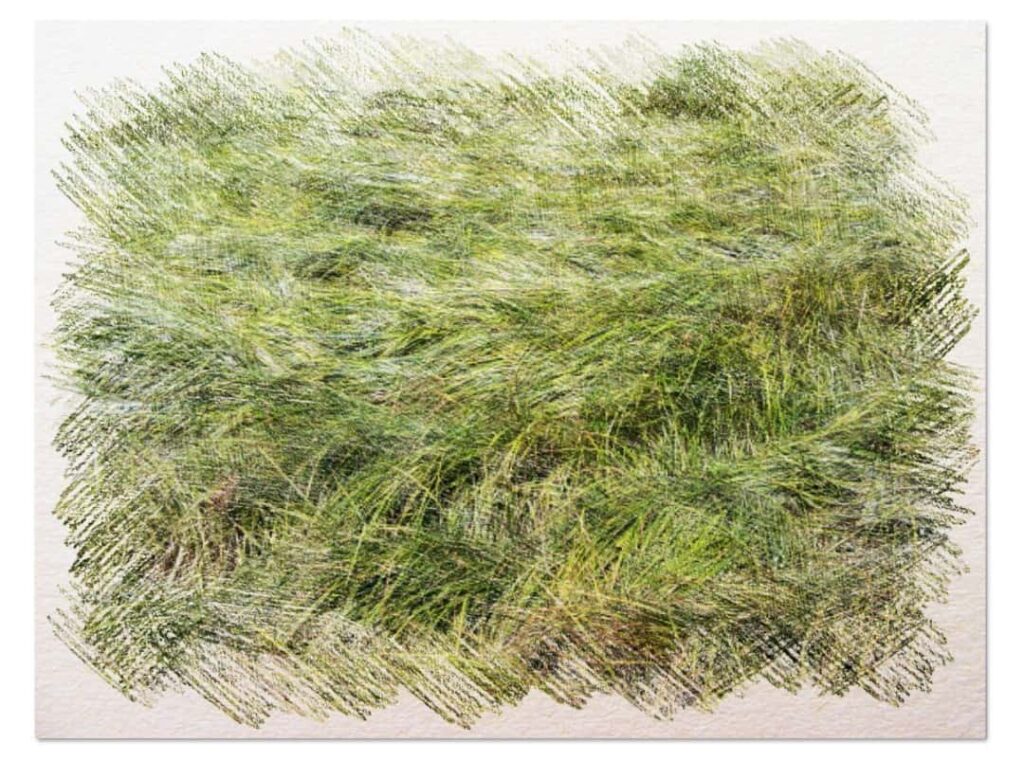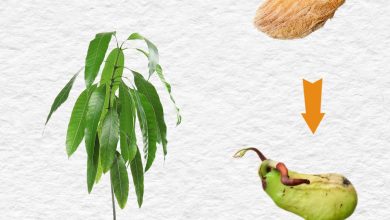How to Plant Tigernut: Planting Method in a [Complete Guide]

Tigernut (Cyperus esculentus) It is a wild plant that produces rounded and rough-textured tubers which are edible and are used to make horchata drinks in addition to its properties as a superfood.
In Ancient Egypt it was already known that tigernut was a hyper nutritious food . In fact, tigernuts have been found in pharaohs’ sarcophagi. It is said that it was the drink they consumed.
In general, tigernut farming is not easy . However, if the proper steps are followed, there should be no problem because they are not very vulnerable to environmental factors (something that we do not control).
You dare?
- When? Crops sown in April have proven to have the most abundant productions.

- Where? It grows well in areas close to the sea. It needs a lot of sunlight. It does not tolerate frost, so it prefers temperate climates.
- How do we prepare the land? We must put a good amount of organic matter or humus earthworm. The land must be rich. It should be loose, tilled and free of weeds .
- What type of soil do we use? Prefers sandy soils.
- How do we water? Ideal, drip irrigation .
- How often do we water? In summer , almost daily. It is necessary that the earth is humid, but without flooding. The rest of the seasons we can space the irrigation, depending on the rainfall that there is .
- When is it harvested? When the top of the plant dries up. This is usually in the months of November and December.
- Plagues and diseases? Breeder and aphid.
Properties and Characteristics of tigernut
 This tuber is known for be rich in essential vitamins and minerals. Its highest content is carbohydrates and fiber. In addition, it provides antioxidants such as vitamins C, E and arginine . It also has moderate amounts of omega-9.
This tuber is known for be rich in essential vitamins and minerals. Its highest content is carbohydrates and fiber. In addition, it provides antioxidants such as vitamins C, E and arginine . It also has moderate amounts of omega-9.
Usually the tubers are round and elongated and of different sizes . Their skin is brown with light to dark tones depending on the type of soil and the time they are harvested. Its pulp is yellow when dry.
Its origin dates from the ancient Egyptian civilizations and it was introduced in the Iberian Peninsula with the Arab invasion . It is currently grown in most parts of the world as long as the right climatic conditions exist.
On the outside , it is a plant that grows the leaves in the form of a rosette and opposite each other .
They come to measure between 40 and 50 centimeters in length and they are dark green.
Its flowers are very small, ranging from 6 to 12 millimeters. They are reddish in color and sometimes slightly golden . They usually grow together.
When to plant tigernut? The time
The planting date depends on the requirements.
It was usually sown in early July or May ; However, the crops sown in April they have proven to have the most abundant productions.
As an interesting fact, an attempt has been made to harvest the tigernut through hydroponic crops , proving to be quite convenient since they also increased production.
Something that is recommended that you take into account when planting tigernut is to note that in the subsequent five months no there is frost since, in the case of having them, the growth of the plant would be carried out with problems or, directly, it would not be carried out.
Where to plant tigernut? Light and temperature
 Taking into account the months without the presence of frost that the tigernut needs to grow, it can develop quite well in temperate climates.
Taking into account the months without the presence of frost that the tigernut needs to grow, it can develop quite well in temperate climates.
The temperatures that it supports best vary between 13 and 25 ° C. In case the temperatures are lower, it is better to sow in a greenhouse or wait for the weather to present better conditions.
Regarding light requirements , Chufa prefers sunny places and grows well near areas near the sea since this regulates the temperature.
If you do not live in an area with nearby bodies of water, you can provide more irrigation so that the humidity decreases the temperature of the soil.
How do we prepare the land?
Tigernut growth is best done in sandy loam soils.
This is because the soil is more soft and it is much easier to collect the tubers . In addition, in this type of soil the tuber acquires a more intense flavor , as well as a larger size and better quality of the skin.
On the other hand, it can also grow in clay soils ; however, the tubers are washed a little later due to the mud that remains stuck around them .
Similarly, they can grow in sandy soils just that the lack of many nutrients groundnuts may have problems for tubers develop that are of good size and sweet flavor.
It also ensures that the soil has good drainage and organic matter . If it does not have these characteristics, you can mix the first 30 centimeters deep with compost . Despite the fact that Chufa grows well in areas with the sea, they do not support soils with high salinity.
How do we water the tigernut?
 The amount of irrigation will depend on the area.
The amount of irrigation will depend on the area.
In summer that is normally the hottest season increases the amount of irrigation. During the other months, water regularly without flooding the area.
Keep the soil slightly moist. To do this as usual, we recommend drip irrigation.
Intense rains and very strong winds can harm the crop as they cause early ingrown .
To avoid this, cover with a small roof so that they continue to receive sunlight. If the rains are light then there will be no problem with the crop, the harvest season can simply be delayed a bit.
How do we plant tigernut step by step?
- You can sow the Tigernut directly on the ground or in a pot; however, there are methods in which it is first allowed to germinate and then planted in the ground.
- Once you have acquired the tigernuts make sure they are very clean , it is important that you do not wash them with commercial soap but only with water since otherwise the tuber may be damaged.
- Then put them in water to hydrate for about two whole days . Throw away tigernuts that have holes , that float or have an abnormal color as it is very unlikely that they will develop.
- Once the seeds are ready, sow approximately two inches deep and with a distance of a few centimeters between them to allow them to develop their root system.
- Then cover with soil without pressing it and water abundantly.
- After a few weeks the shoots will begin, which will be small green leaves above the ground.
- The tigernut harvest takes place between the months of October to November. If you have maintained the growing conditions, you will notice that the leaves are growing and by the months of harvest they will change to brown and begin to dry. This means that you can now remove the tuber.
- Once you have removed it from the ground , wash it with plenty of water and let it dry completely . If you do not use all the tigernuts that you have collected, you can store them as if they were legumes or in the refrigerator at temperatures no lower than 2 ° C.
How and when do we harvest tiger nuts?
We must begin to collect the tigernut when the top dries up.
This happens at the end of the year, specifically during the months of November and December.
After harvesting, either manually or with machines , it goes on to the subsequent washing, drying and maturing.
The tigernut should be left to cure for a few months to obtain the sweetness that characterizes it.
What favorable associations does it have?
The tigernut grows well in monocultures, that is, only with other tigernuts.
However, it is convenient that you do not make two consecutive harvests of this plant since deficiencies are generated in the soil . To keep the vitamin and mineral requirements stable, you can plant onions one season earlier or later.
What pests and diseases does it have?
The main pests are by caterpillars that attack the leaves, aphids and borer.
The Cyperus genus is usually the most prone to borer attacks. You can avoid it by doing what it says in the section on favorable associations.

![Photo of Honeysuckle Cuttings: [Grafts, Time, Rooting and Planting]](https://www.complete-gardening.com/wp-content/uploads/2022/08/honeysuckle-cuttings-grafts-time-rooting-and-planting-390x220.jpg)


